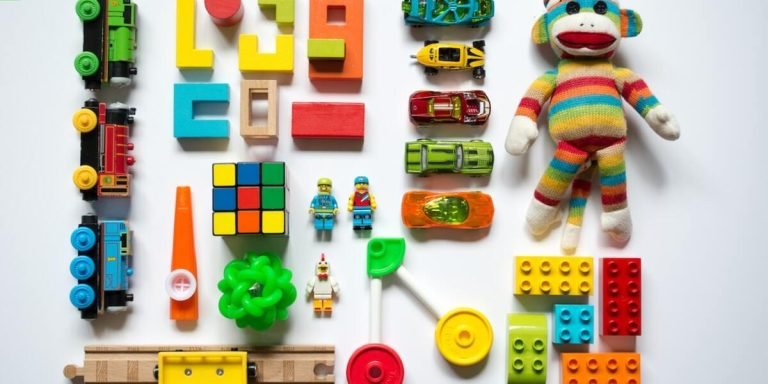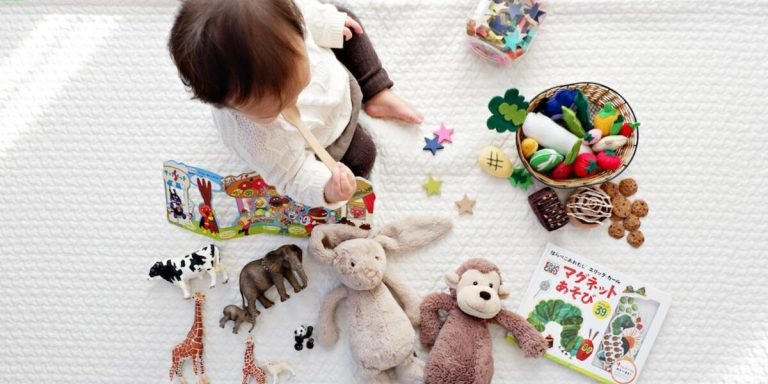Hands-on Experience: A Key Ingredient in Effective Early Childhood Education
The concept of learning in early childhood education is evolving rapidly. We’ve moved past the traditional methods where children sit quietly at desks, absorbing knowledge from a teacher. Today’s educational experts understand that active and “hands-on experience” plays an essential part in developing young minds.
Hands-on experiences refer to activities that actively involve students instead of just letting them observe passively; this approach can also be referred to as activity-based learning. This formative type of teaching promotes deeper understanding, boosts creativity, enhances problem-solving skills, among other benefits – all by encouraging kids to learn through doing rather than just listening or watching.
Did you know?
Did you know that the National Association for the Education of Young Children (NAEYC) asserts hands-on learning in early childhood stimulates brain development and enhances cognitive and creative skills?
Exploring the Benefits of Activity-Based Learning for Hands-On Experience
Activity-based learning, often referred to as hands-on experience in the education sector, has taken center stage as an essential component of effective teaching methodologies. It’s no longer a question of whether this approach should be integrated into curriculum but rather how educators can best leverage its potential for optimal results. In 2023, technology integration continues to influence numerous aspects of society and our daily lives; nowhere is this more evident than in childhood education.
By integrating technology into activity-based learning experiences, students gain a deeper understanding of concepts by actively participating instead of just passively receiving information from teachers or textbooks. This active participation stimulates critical thinking and problem-solving skills while fostering creativity and innovation – vital competencies needed for success in today’s digital world.
Moreover, children who engage with educational material through tangible activities tend not only to absorb the content quicker but also retain it better over time. Coupled with adaptive technologies like virtual reality (VR) or augmented reality(AR), such interactive lessons can provide multi-sensory stimulation that traditional classroom methods simply cannot replicate.
In conclusion ,technology-integrated activity based learning provides an immersive platform where students take ownership of their knowledge acquisition process which leads to lifelong learners who are prepared 21st-century demands .
The Impact of Experiential Learning on Student Engagement
Experiential learning has revolutionized the domain of education, especially in terms of fostering student engagement. It emphasizes ‘learning by doing’, which results in a hands-on experience that significantly enhances understanding and retention.
Foremost among its advantages is increased absorption due to active participation. As students engage with their lessons actively through tactile or kinesthetic activities, they are more likely to retain what they learn far better than passive forms of studying like reading or listening alone.
Next comes improved problem-solving skills—a direct outcome when students gain this kind-of hands-on experience—armed with holistic knowledge rather than just theoretical underpinnings. They develop an aptitude for analyzing situations and finding solutions practically as well as creatively.
Thirdly, experiential learning promotes greater flexibility in thinking because it brings abstract concepts into tangible experiences within the real world context. This equips learners with an ability to adapt quickly during unexpected circumstances—an essential trait needed not only acadically but beyond classroom confines too.
In parallel runs another advantage—the acquisition of soft-skills such-as teamwork and communication becomes innate given that many activity-based tasks demand collaboration amongst peers along-with clear dialogue exchanges between them-and their educators.
Bridging Theory and Practice: How Activities Enhance Understanding
Have you ever wondered why children love to play? The answer is simple. They’re learning!
Activity-based learning (ABL), a strategy that involves using hands-on experience, helps bridge the gap between theory and practical application.
The beauty of ABL lies in its versatility. Whether it’s science experiments mimicking real-world phenomena or mathematics problems resolved through manipulatives, every lesson has an opportunity for activities. And when students immerse themselves, they receive more than just textbook knowledge; they gain hands-on experience.
Let’s delve into how this approach can greatly enhance learners’ understanding:
– Makes Learning Fun: Activities turn classroom sessions from monotonous lectures to engaging experiences. Who wouldn’t want a dose of fun while grasping complex concepts?
– Promotes Active Participation: In typical lecture-style classes, some pupils feel left out due to their difficulty expressing ideas publicly. But with activity-oriented modules – everyone gets involved!
– Encourages Deep Understanding: Through simulations or problem-solving exercises geared towards providing hands-on experience on specific topics, students get first-hand insights which leads them toward deeper comprehension.
In 2023’s educational landscape where technology integration plays a pivotal role in education delivery methods around the globe – online platforms have found innovative ways to integrate interactive features simulating these physical activities virtually as best possible ensuring seamless continuity in imparting quality education regardless geographical barriers.
Key Components of Designing Effective Activity-Based Lessons
The integration of technology in education has been a game-changer, particularly when it comes to designing effective activity-based lessons. In the era where digital literacy is no longer an option but a necessity, including such aspects into lesson planning equips students with not only academic knowledge but also hands-on experience.
When constructing these activities, one key component that educators need to focus on is relevance. Lessons must correlate with real-world scenarios as much as possible for students to understand and apply their learning effectively. For example, coding concepts could be introduced through programming robots or creating games; this way they can see what goes behind building the apps or video games they often use, instilling creativity along with understanding.
Another essential ingredient includes flexibility and adaptability within each session’s structure. Hands-on challenges should encourage exploration rather than rigid instructions following—This aids youngsters in thinking outside-the-box producing creative solutions fostering problem-solving skills which are significantly important in today’s fast-paced world brimming full of innovations powered by technology.
Crafting Real-World Scenarios to Foster Skills Application
Crafting real-world scenarios within the realm of activity-based learning allows children to gain crucial hands-on experience. It is a key component in designing effective lessons that stimulate and engage young minds.
Today, it’s essential not just merely teaching facts but helping students understand how they can apply these learned skills in their everyday lives outside school grounds. This principle holds even more true with technology integration permeating every facet of education.
When crafting engaging real-world scenarios, consider situations that encourage kids to use their critical thinking and problem-solving abilities.
Firstly, identify core concepts or topics embedded in your curriculum that lend themselves naturally to practical application. For instance, if the topic involves weather phenomena like tornadoes or hurricanes might be better understood when simulated on augmented reality platforms rather than traditional textbooks alone.
Next, structure your lesson plan around applying those concepts practically—an element necessary for cultivating a hands-on experience mindset among learners today.
Inspire creativity by allowing them room for innovation while solving problems using available resources—be it collaborating on digital project boards or creating visual presentations mobile apps—it makes classroom teachings relevant beyond four walls.
Lastly, ensure assessments also mirror this approach as much as possible since integrating tests based on such interactive experiences offer an unbiased evaluation mechanism; thereby making evaluations less intimidating process yet still meaningful and effective way tracking progress over time—all thanks digitized tools now readily accessible educators administrators alike!
Utilizing Feedback Systems to Encourage Reflective Thinking
In the evolving landscape of education, feedback and reflective thinking have been recognized as vital pedagogical tools. Particular emphasis is placed on these aspects in activity-based lessons where students gain hands-on experience.
Let’s delve into how cutting-edge technology can be leveraged to utilize feedback systems for encouraging reflective thinking among learners effectively.
Firstly, digital platforms like interactive whiteboards or web applications provide immediate assessment opportunities during ongoing activities. Herein lies one key strength of integrating ed-tech into classrooms – instant corrections or appreciations make learning experiences more dynamic and effective. Moreover, this real-time insight helps children personally reflect upon their understanding level while engaged with any tasks involving active participation.
Secondly, online quiz makers are an excellent resource offering constructive criticisms that foster critical thought processes in young minds over time. This direct link between performing actions and receiving responses cements learnings much more firmly than traditional methods.
Moreover, peer-to-peer review tools offer another promising avenue to instill a culture of collective growth within class environments through mutual evaluations amongst students themselves which spurs increased engagement levels due to its collaborative approach of driving knowledge enrichment especially when it involves getting practical exposure to subject matters intangible format!
Measuring Success in Activity-Based Learning Environments
In the evolving landscape of education, identifying success in activity-based learning environments has become a crucial task for both educators and parents. The integration of technology plays an instrumental role here as it transforms not just how children learn but also how their progress is evaluated.
Children’s engagements with hands-on experiences are observed and analyzed to get insights into their learning process. Real-world situations enhanced by technological tools provide dynamic platforms for students to acquire new skills actively rather than passively absorbing information at a conventional teaching pace. In this setup, measuring success goes beyond merely checking off boxes against traditional academic benchmarks; instead, it evaluates holistic growth – cognitive development coupled with social-emotional learning.
Activity-Based Learning (ABL) supports meaningful mental stimulation where inquiry-driven tasks trigger resourcefulness among learners encouraged by technology-enhanced resources such as interactive software or virtual reality setups. When used correctly, these high-tech aids promote complex problem-solving abilities while offering immediate feedback aiding instructors’ assessment processes significantly.
The evaluation process then becomes two-fold: one that observes student engagement levels during activities – degree of participation or collaboration demonstrated while undertaking projects or group assignments; secondly gauging knowledge retention- if they can recall concepts effectively over time when applied in varied contexts.
Assessing Skill Acquisition Through Hands-On Tasks
In the realm of activity-based learning, measuring success can be a bit trickier than in traditional education models. However, one effective way to gauge student progress is by assessing skill acquisition through hands-on tasks.
Hands-on experience plays a significant role in this formative assessment method. It allows learners to practice and apply their skills directly during lessons. While textbooks provide useful information about theories and principles, applying those concepts practically provides an understanding that simply cannot be matched on paper alone.
From coding programs to creating dioramas or building small devices using STEM kits—hands-on tasks span across various subjects offering children real-world context for abstract ideas. This not only enhances knowledge retention but also nurtures critical thinking skills as they solve problems independently throughout these activities.
Let’s look at two key ways technology helps us leverage such kinds of assessments:
1) Digital Portfolio: One popular means of recording evidence for hands-on skill acquisition is through digital portfolios. In 2023, many educational technologies offer portfolio features enabling students to upload photos or videos documenting their work process and final products – showcasing their mastery over specific skills while providing tangible proof of learning growth over time.
2) Gamified Learning Platforms: The modern tech-integrated classroom has seen gamified platforms becoming increasingly prevalent tools encouraging experiential learning via interactive modules that simulate real-life scenarios where budding academics can put theory into practice effectively marking out milestones reached along each learner’s journey which are easily tracked & evaluated by educators.
Evaluating Cognitive Development Through Interactive Challenges
Within an activity-based learning environment, measuring cognitive development becomes a fascinating adventure. The approach empowers the learner to gain hands-on experience–a precious commodity in today’s educational landscape. Let’s take a deep dive into how such progress can be evaluated through interactive challenges.
Firstly, it’s vital to understand that each lesson designed for active involvement acts as both teaching aid and evaluation tool. For example, when students participate in role-plays or group projects based around technological integration concepts like coding or app design, instructors gauge their understanding of theoretical principles by observing practical applications.
Interactive tech games are another stellar way to assess cognitive growth—especially those involving problem-solving tasks related to real-world issues connected with technology. Such experiences enable teachers not just to measure intellectual expansion but also help children build button-pushing skills necessary for solving problems they might encounter later on in life.
Activity-based assessments have one more trick up their sleeves—the ability of recording data over time using online platforms and tools (say e-portfolios). Teachers monitor this digitized evidence of student work—a compilation of various project outcomes, classroom activities etc., which provide robust insights about individual learning paths including areas where support is required.
In essence: Activity Based Learning—when integrated wisely with current technologies—not only kindles our young learners’ fascination towards education but helps them develop essential 21st-century abilities alongside assessing their ongoing pedagogical journey more efficiently via interactive assignments.
Conclusion
In wrapping up, it’s clear that hands-on experience plays a pivotal role in shaping the learning journey of our little ones. It fosters an environment where children can immerse themselves fully in the joy and wonder of discovery, simultaneously growing their cognitive abilities while having fun. Every child deserves this enriching opportunity to explore, engage with others and express themselves freely.
As we continue to unlock new paths for effective early childhood education, remember there is more wisdom awaiting your perusal on our website. Take advantage of the wealth of resources we’ve compiled just for you – educators looking to enhance teaching methodologies or parents seeking guidance on how best to support their children’s educational endeavors at home. There’s always something valuable here for everyone vested in nurturing young minds towards greatness.







